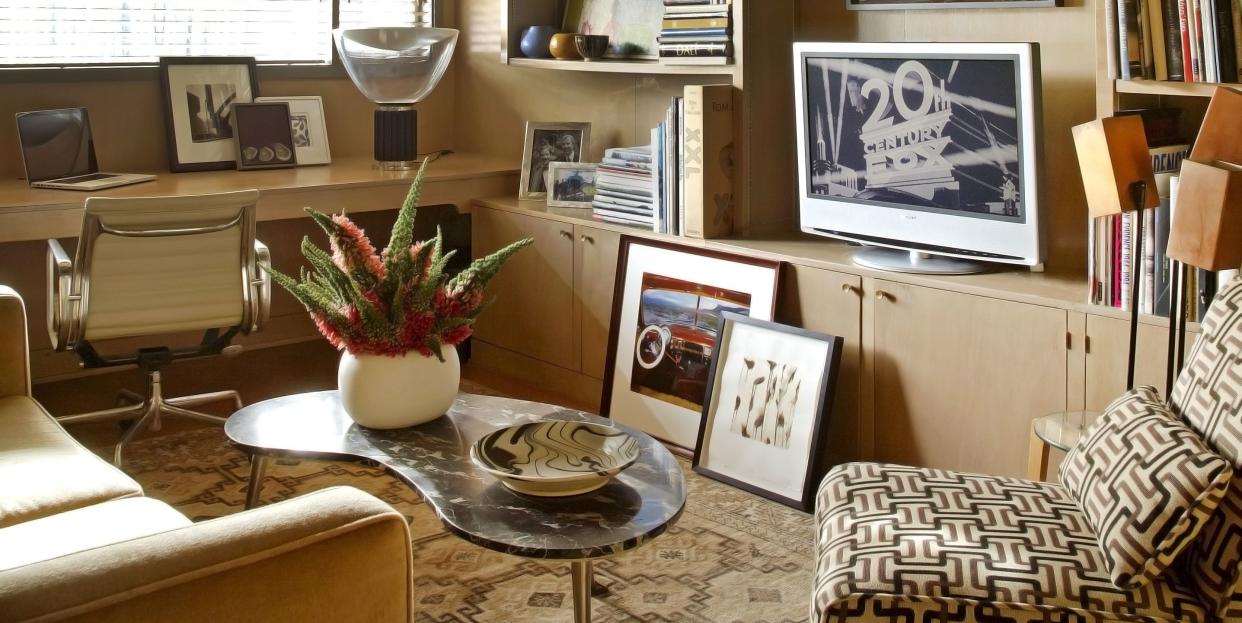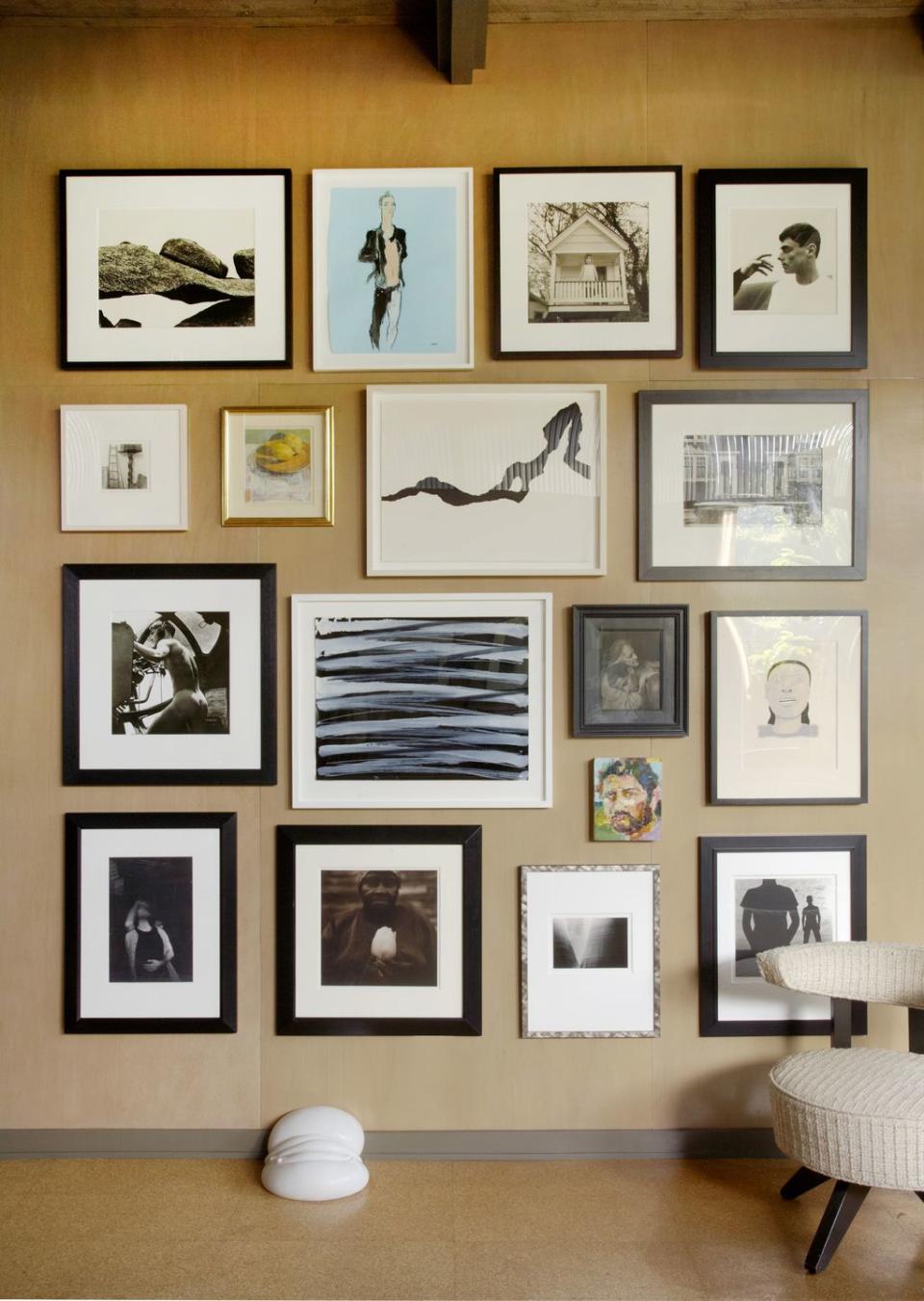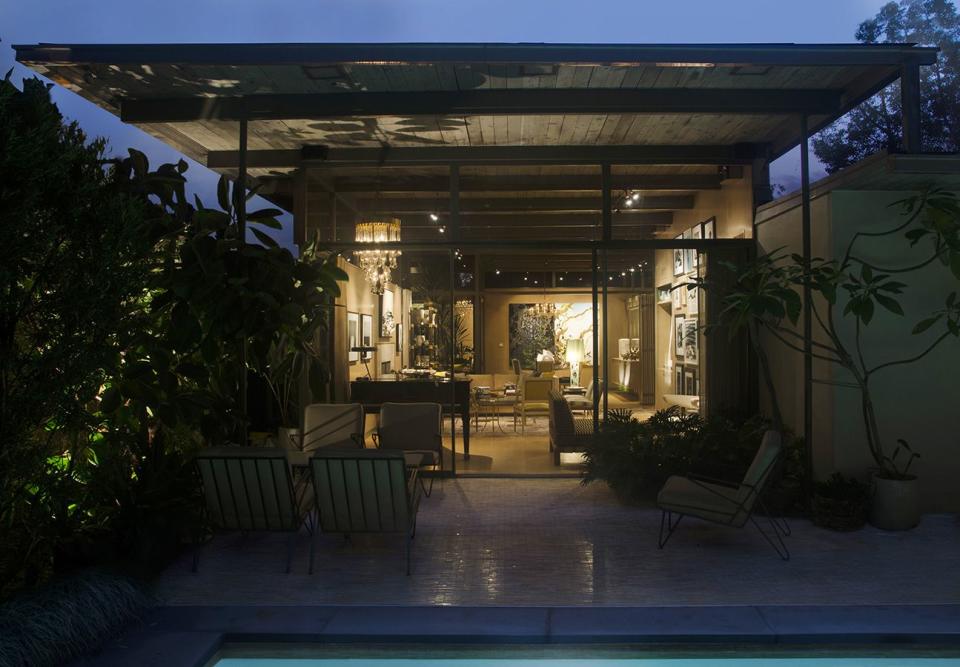You've Been Using Recessed Lights Wrong This Whole Time

Track lighting has a terrible reputation. Just saying the words can make people cringe, but Lee Ledbetter understands its potential. The veteran designer and architect is used to dissecting homes, looking at every aspect of a space to make it the place you never want to leave. (He's literally written the book on it-The Art of Place, an anthology of his work, which is available for pre-order now.) And he's learned that one of the most overlooked features in a home-that can make the biggest difference-is its lighting.
While he's the first to admit that track lighting isn't his favorite option, it wound up being a game-changer for the modernist house he and his partner lived in for years. The New Orleans home-located just eight miles from the French Quarter-immediately snagged his attention, with its pine ceilings and Philippine mahogany paneling. It was warm yet modern, with glass corners overlooking the garden, bringing a sense of the outdoors in.
There was no doubt it had great bones, which Lee took great pains to preserve, down to stripping the aforementioned paneling and matching it to the color of the wood found inside a dark closet, where sunlight hadn't bleached it. But to truly make it a home, it needed the couple's personality layered on top of that architecture. Specifically, it needed their art.

"We love collecting art, and we tend to move it around a lot, so we needed lighting that was adaptable," Lee said. Though he preferred recessed lights, the mid-century modern house's ceilings were designed in a way that he couldn't add them without building light boxes on top of the roof. It would've been an eyesore from the outside, so Lee started searching for track lighting options, finding a bronze system that played up the warmth of the wood ceilings. It was discreet yet deliberate, setting the mood without competing with the existing architecture.
The look of the lights were one thing, but another crucial factor was the way they were set up. "I can't tell you how many homes I've walked into where the recessed lighting is pointing straight down-it's horrible," Lee said. He suggests pointing it toward the walls, letting the light bounce off of them to cast a gentler glow throughout the room.
"I almost never use overhead lights," he explained. "Nobody looks good, and it casts ugly shadows."
Indeed, even in dining rooms, he'll install a decorative chandelier, then add in two unobtrusive pin spot lights on either side of the fixture. "I'll work with an electrician to focus and aim the lights, so they're not hitting people's faces while they're trying to eat."
The glow from the wood paneling gives the entire home an inviting, cozy feel-a feat, considering the 50-foot-long living and dining area and clean, modern lines of the house. In different hands, a space like that could feel cold and uninviting.
Lee played up the house's original architecture with mid-century furniture and let his art collection be the focal point in just about every room. That attention to detail-and respect for the space-actually led him to receive one of his biggest compliments to date: "[Designers] Doug and Gene Meyer visited, and when they saw the house in the evening light, they said it reminded them of the house in A Single Man," he said, referring to the 2009 Tom Ford film set in the 1960s. "I watched that movie three times, just because I loved the house so much."

Though Lee and his partner have since moved away, the Riverbend house will always be special to them. "The architecture was so splendid," he said. "It was so easy to live in."
The beautiful house was always there; it just needed the right person to make it shine.
Follow House Beautiful on Instagram.
('You Might Also Like',)

